BMW Fuel Pump Control Unit Problems | EKPS module
BMW’s Fuel Pump Control Module, also termed EKPS, is a critical component in BMW’s fuel delivery system. It commands the electrical power supply going to the fuel pump, ensuring that the engine acquires the proper pressure and amount of fuel to run efficiently. Despite that, like all mechanical and electronic parts, the control module could fail, resulting in multiple problems for BMW owners. In this article, we will discuss the symptoms, causes, and solutions for BMW fuel pump control module failure, as well as ways to prevent it from occurring in the beginning. By having info on the potential issues and taking the necessary steps to maintain and repair the control module, you can keep your BMW running smoothly and avoid costly repairs down the road.
What is the BMW EKPS module?

The electronic fuel pump control module (EKPS | EKP ) controls the fuel pump. The EKPS control unit is different from the fuel pump. EKPS units are generally installed in the trunk (side panel) or under the rear seat while the fuel pump is mounted on top of the fuel tank.
The engine management system sends the request for the fuel required to the EKPS control module. The EKPS control module converts this request into a corresponding engine speed for the fuel pump in the fuel tank. The EKPS control module activates the fuel pump according to the engine speed. – TIS Document 16 02 03036
When replacing the EKPS module, the new one must be programmed (coded) to the car. However, many BMW owners have successfully swapped their EKPS module with a used one without programming it as long as the used unit is from a similar BMW model and engine.
Symptoms of bad EKPS Module
In some cases, the engine may start but shake and then cut off. Waiting a few minutes will often allow you to restart the engine. List of possible symptoms you may notice if the EKPS module or one of its components fails.
- Warning message on iDrive screen
- Fuel supply low
- Fuel Pump Malfunction
- Engine Malfunction! Reduced Power!
- The engine cranks but will not start
- Fuel pump voltage too low
- The engine starts and then shakes
- Hesitation under hard acceleration
- Engine misfire and sputtering
- BMW would not stay running
How to Diagnose BMW EKPS Problems?
If you are experiencing problems, reading fault codes from the EKPS module is a good starting point. You will need a BMW scanner to read and clear codes from the fuel pump module. The YOUCANIC Full System Scanner can read and clear fault codes through every control module of your BMW vehicle.
If any code is present, it needs to be addressed. Codes in STORED / PAST status can be erased.
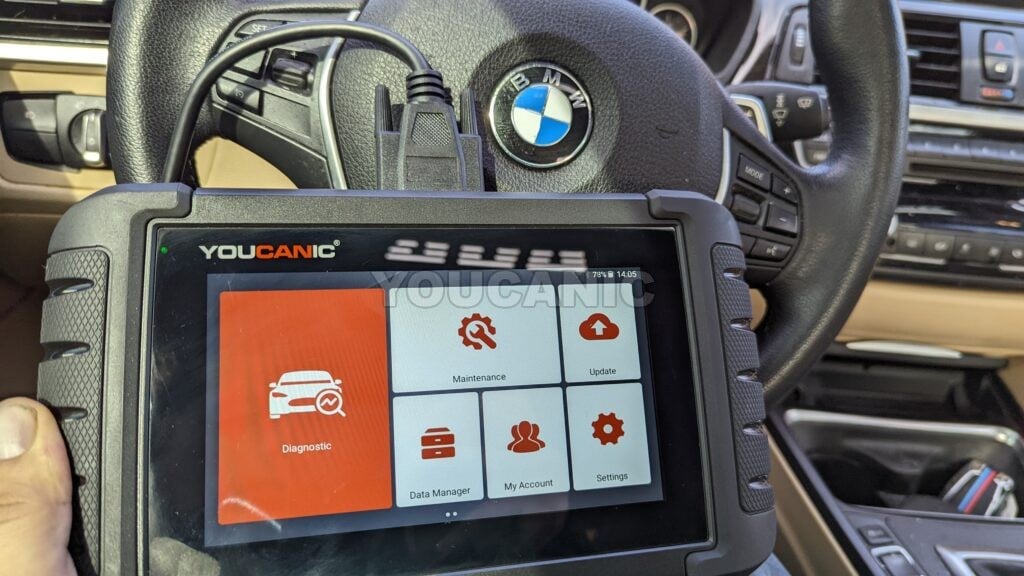
- Plug the OBD-II scanner into the DLC diagnostic port under the dashboard.

- Turn on the ignition; don’t start the engine.

- Turn on the scanner and select your BMW chassis. Next, Select the Control Units menu.

- Select Drive, then EKPS fuel pump control.

- Once you enter the EKPS module, you can do the following.
- Read Codes from the EKPS Module
- Clear Codes from the EKPS Module
- Perform Adaptations, Activations, Tests

What Causes BMW EKPS Problems?
A defective EKPS control unit, bad fuel pumps, or leaky injectors can demonstrate similar symptoms. Proper diagnostics can be a challenge, even for experienced BMW technicians.
- EKPS Module—The EKPS module can fail to cause no-start problems or issues under hard acceleration. A software update may address certain EKPS module issues. If a software update does not fix the problem, replacing the EKPS module may be necessary.
- Fuel Pumps – BMW cars have two fuel pumps. The electric-controlled Low-Pressure (LPFP) is located in the fuel tank, and the mechanical High-Pressure (HPFP) is installed in the engine. Either one can fail to prevent your BMW from staring or cause low-pressure error messages to come up. If you are experiencing problems where the car will run rough and the engine RPMs will not go past 2000, the problem could be fuel pumps.
- Leaky injectors – One leaking fuel injector can cause the same symptoms and even trigger fault codes in the EKPS module. Test the fuel injectors to ensure a leaky injector is not the problem.
EKPS Adaptation
This is a list of activities you can perform via the EKPS module.
- Reset the EKPS control unit
- Activate fuel pump
TIP! Your scanner must perform bi-directional tests to carry out these adaptations and activate sensors or modules.
Live Data
In the EKPS module, you can display live data from various sensors that communicate with the EKPS module.
- Fuel pump actual speed Unit r/min
- Setpoint delivery quantity via CAN bus from engine Unit l/h
- Specified delivery rate, fuel pump Unit l/h
- Specified speed, fuel pump Unit r/min
- Current at the fuel pump (A)
- The voltage at the fuel pump, terminal 15, terminal 30 (Volt)
Fault Codes
The BMW EKPS module can store hundreds of fault codes. Below are some examples of codes stored in the module.
- 481B01 EKPS control voltage too low
- 6292 EKPS – Control voltage to low
- 6291 6293 – Control Current too high
- 0029DC – Low pressure in the high-pressure system
- 0029F3 – Fuel pressure sensor, electric (Could also be caused by a defective fuel pressure sensor. )
- 002B2C – High-pressure fuel system, fuel pressure
- 0029DC – High-pressure fuel, plausibility, cold start
- 29F2 – DME fuel high-pressure system, fuel pressure.
- 29F1 – DME (gasoline engine control)Fuel pressure fuel, plausibility
- 2AAE – Fuel pump, Intermittent
Conclusion

The BMW fuel pump and fuel pump control module are responsible for controlling the electrical power supply to the fuel pump and fuel delivered to the engine. When the control module fails, the fuel pump may not receive the proper voltage, leading to a lack of fuel pressure and, ultimately, no start condition.
Symptoms of a failing EKPS or the fuel pump control module involve difficulty starting the engine, stalling while driving, and a noticeable loss of power. In some cases, the engine may not start at all. A diagnostic scan tool can recognize a faulty EKPS by retrieving fault codes or DTC associated with the fuel system and monitoring the fuel pressure while the engine is operational.
It is important to note that starting problems may also be affected by other issues, such as a faulty fuel pump, clogged fuel filter, or a malfunctioning power supply circuit. These issues should be checked and addressed before replacing the control module.
A diagnostic scanner can read, clear, and perform bidirectional tests on BMW vehicles. Full system scanners that work on BMW vehicles can range from $150 to $800. Check the YOUCANIC Full System Scanner, which supports all makes and models.
We hope you find the BMW Fuel Pump Control Unit Problems | EKPS module guide helpful. For more help with your BMW, check these troubleshooting and repair guides.



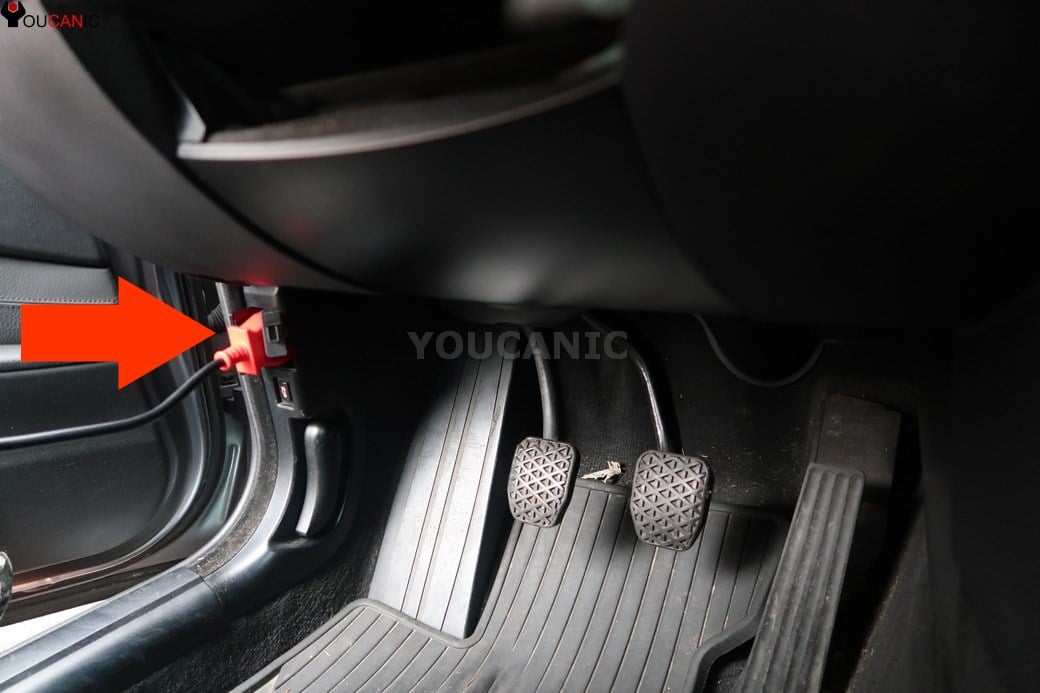
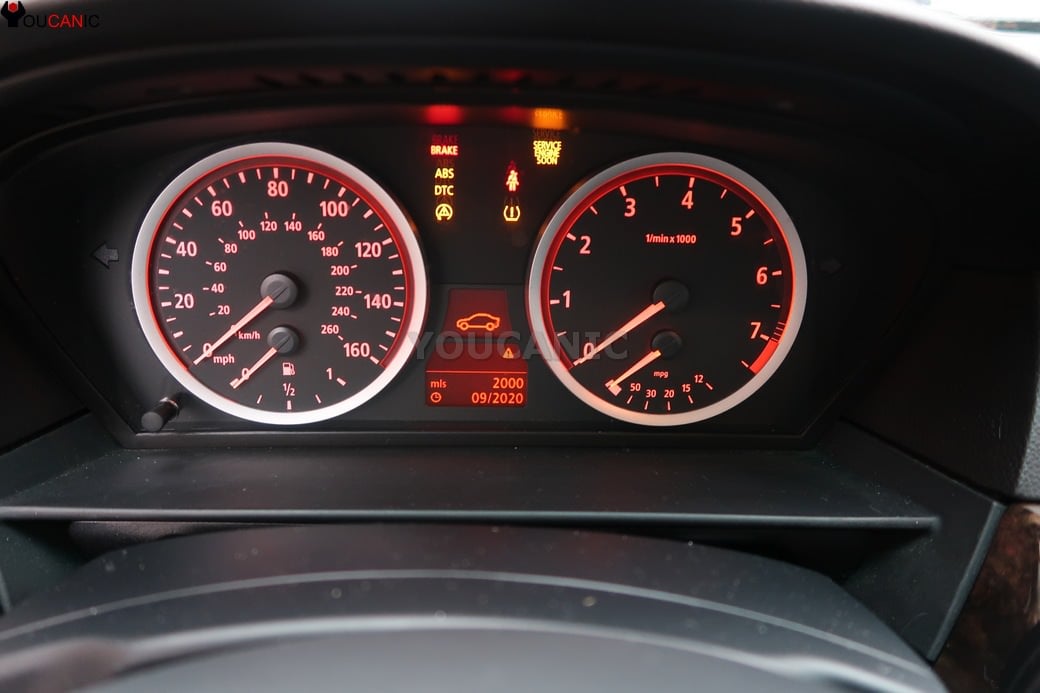
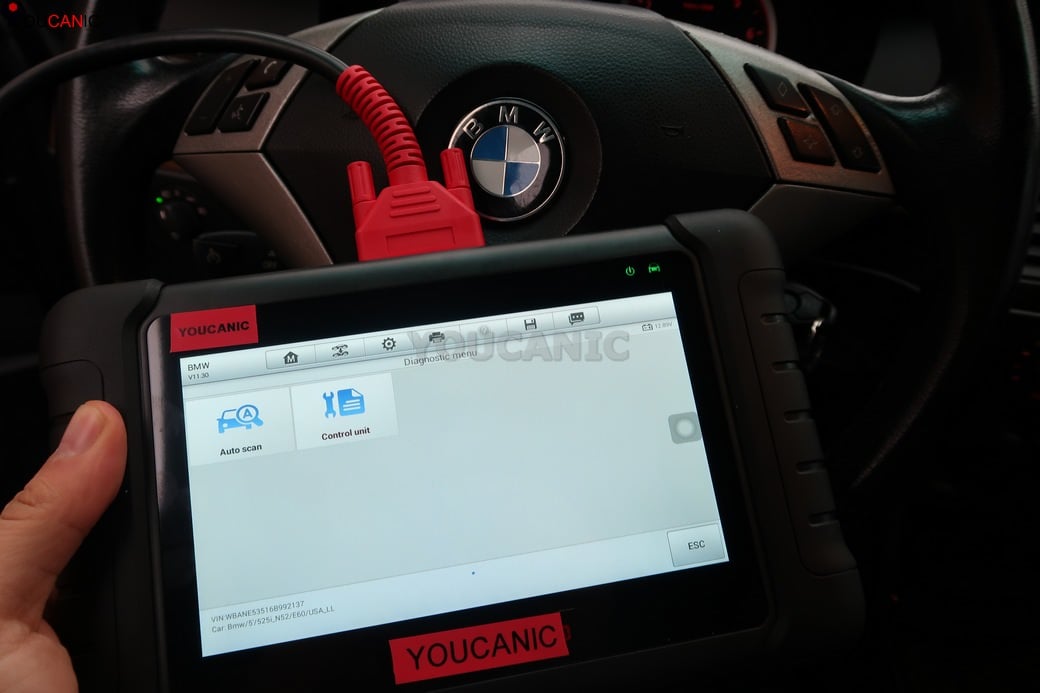
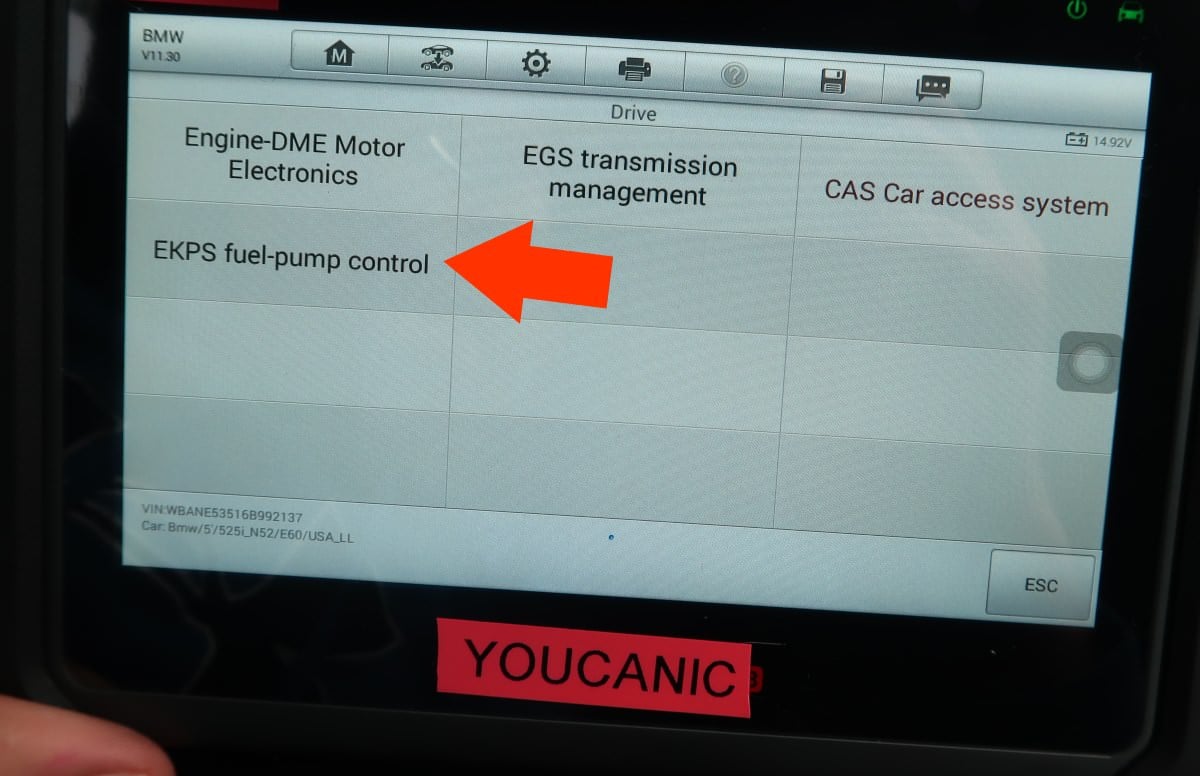





Brother, where did you find the relay fuse? This thing is driving me crazy 🙁
I have a 2011 F10 – got a Drivetrain Malfunction Warning so I plugged in the Foxwell BMW scanner. The code that came up was EKPS Fuel-pump Control – it says No Fault. What does that mean? Is it the high or low fuel pump? It’s not giving me any further info. Thank you!
Im having the same problems..I have a temporary fix.. until I replace it.. I got it cheaper than the dealer price.. but still a pretty penny. My car shut down one day while I was driving, so I pulled over and was like WTF. So, before METRO arrived I creeped over to the shoulder and began simple troubleshooting via YouTube.. ended up swapping out my Fuel Pump Relay cause it was overheating. Followed that up to the Fuel Control Module and here I am.. I picked up a New OEM Module for about $250
Hi. Very helpful article. It mentions replacing the unit with a used one. I found a used one from the same vehicle I have 2013 BMW 328i. Do I simply just unplug the old (faulty) one and plug in the new (used) one?
BMW wants $1,700+ to replace it and the used one I found was less than $100.